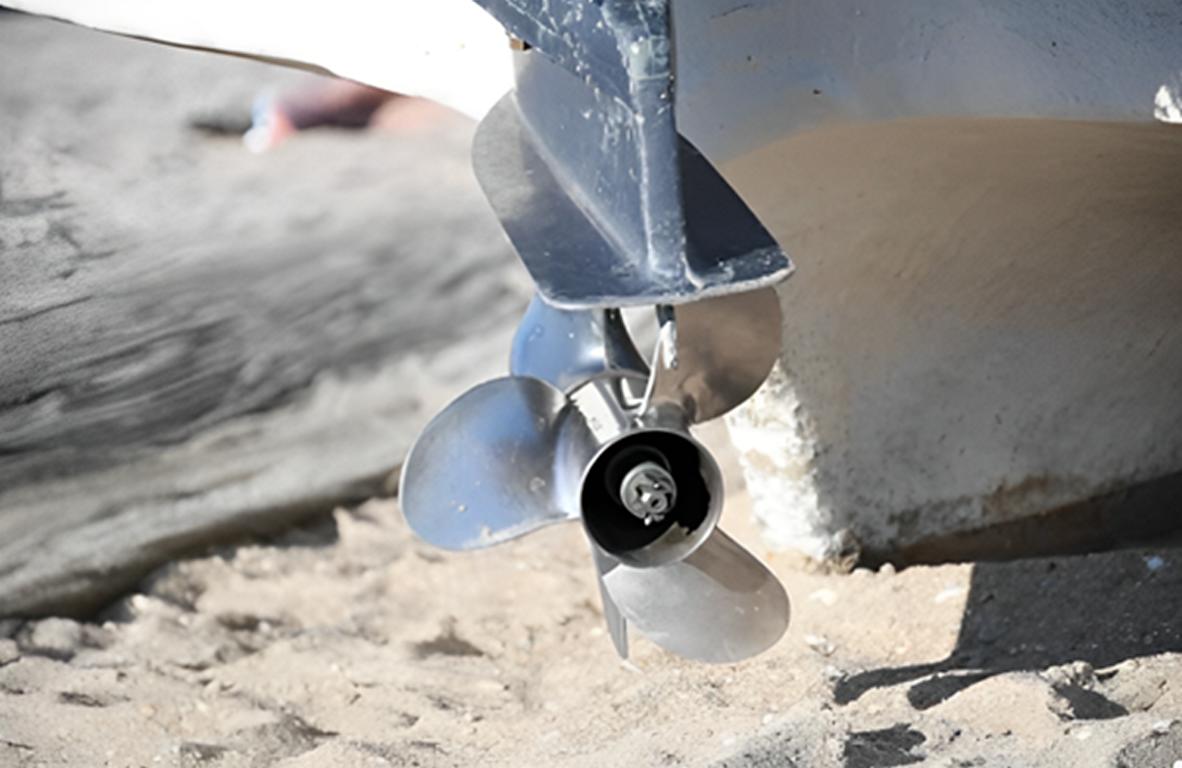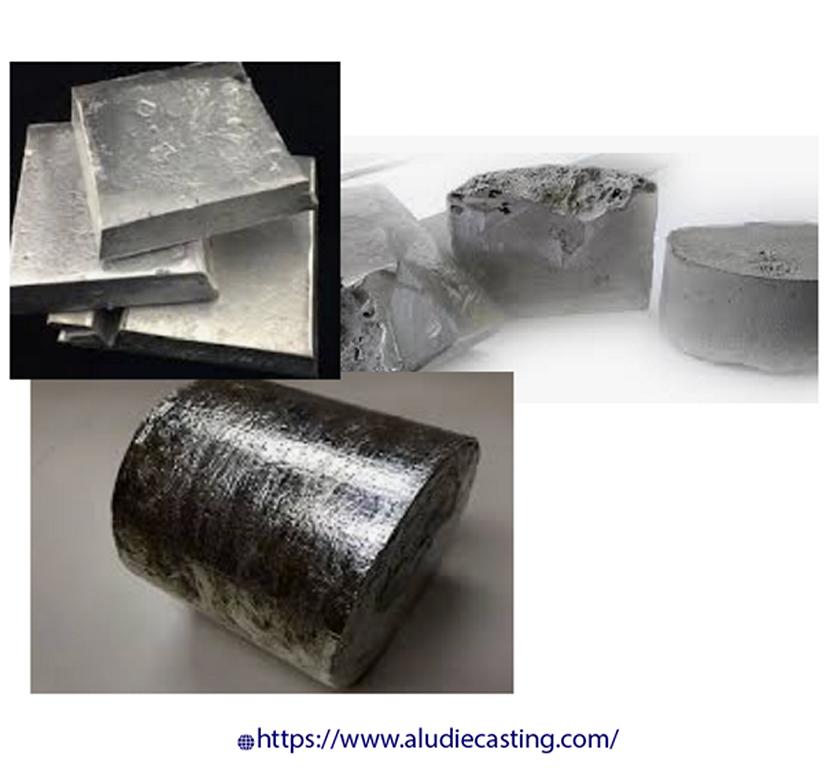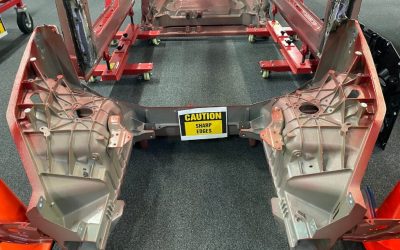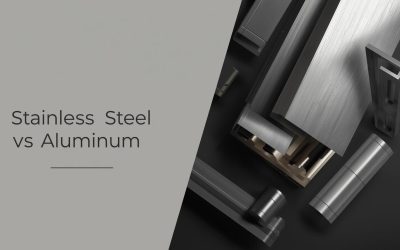Scandium Aluminum Alloy, Its Process, Properties and Applications
Scandium aluminum alloy is among the high-performance materials. It is a blend of a rare earth metal, i.e., scandium, and aluminum. It provides us with the properties of both elements. Scandium alloy is quite light in weight because of aluminum. On the other hand, it is super strong and offers better corrosion resistivity and weldability than other aluminum alloys. Besides this, they are suitable for high-stress environments, i.e., aerospace, automotive, and sports equipment.
They have a wide range of applications in different industries. In this article, we will discuss its composition, applications, and market dynamics. Besides this, we will also discuss the impacts of the impacts of the scandium aluminum alloy and its use for technological innovations.
Definition of Scandium Aluminum Alloy
A scandium aluminum alloy is composed of a small percentage of scandium. It ranges between 0.1% and 0.5%. So, it can improve the alloy’s strength, corrosion resistance, and weldability. Additionally, the presence of scandium in aluminum creates a fine-grained microstructure. It helps increase the overall properties of the alloy. So, this fine-grained structure is responsible for the improved mechanical properties. It may include a higher tensile strength and better resistance to cracking.
Composition of Scandium Aluminum Alloy
So, here is the detailed table that will help us understand the major composition of scandium aluminum alloy.
| Element | Typical Range | Purpose/Benefits |
| Aluminum (Al) | Base Metal | The majority of the alloy provides a lightweight and corrosion-resistant foundation. |
| Scandium (Sc) | 0.1% – 0.5% | Improves strength, enhances corrosion resistance, and significantly increases weldability. |
| Magnesium (Mg) | 0.3% – 1.0% (optional) | Further enhances strength and corrosion resistance. |
| Zirconium (Zr) | 0.1% – 0.3% (optional) | Contributes to grain refinement and phase stability, improving overall alloy performance. |
| Titanium (Ti) | Trace amounts (optional) | May be added to further improve grain refinement and mechanical properties. |
| Manganese (Mn) | Trace amounts (optional) | Can enhance corrosion resistance and overall mechanical properties. |
| Other Elements | Trace amounts (optional) | Small quantities of other elements (like rare earth metals) may be included to fine-tune specific properties. |
Manufacturing Process of Scandium Aluminum Alloy
The manufacturing process of scandium aluminum alloy is comprised of several key steps. Let’s discuss each step in detail.
1. Raw Material Selection and Procurement
It starts with selecting the raw material for making scandium aluminum alloy. As we have discussed earlier, scandium is a rare earth metal. It is mostly found in mineral deposits. Besides this, it is also present as a byproduct of industrial processes. On the other hand, aluminum is abundantly available. It is usually extracted from bauxite ore. Moreover, if the chosen material is quite good, it helps increase the quality and purity of the alloy.
2. Weighing and Blending
After selecting the right materials, the second stage is to weigh these materials. This is quite a precise process. Always weigh and precisely blend the materials to get the required alloy composition. Here the scandium is added in a very small quantity, i.e., 0.1% to 0.5%. This small amount can even significantly increase the mechanical properties of aluminum. Make sure to weigh and blend these materials in a controlled environment. As its concentration is sensitive, it can be exposed to contamination in open areas and disturb the element composition.
3. Melting and Casting
Once the composition of the element is finalized, the next step comes, i.e., melting and casting. Here, the raw material blend is first heated inside a furnace and then melted at a specific temperature. Then this molten scandium-aluminum blend is injected into a die. It can attain the shape of the die. This casting is important for removing the impurities from the mixture and making it homogenous. These impurities usually come from the mixing phase.
4. Heat Treatment
After casting, the alloy is then allowed to pass through a series of heat treatments. We can improve its mechanical properties. These treatments may include annealing, quenching, or aging treatments. These treatments refine the ally microstructures. Besides this, it also increases the strength and ductility of the material. Moreover, it also fixes the residual stresses from the casting process.
5. Finishing Processes
The last stage is the finishing of the scandium aluminum alloy. Here, this alloy undergoes several finishing processes. It can achieve the required surface smoothness and dimensional accuracy. These processes mainly include machining, polishing, and coating. Moreover, these steps are important to ensure that the final alloy meets stringent quality control standards.
Properties of Scandium Aluminum Alloy
Here are some important features and properties of scandium aluminum alloy that make it unique and highly demanded in different industries. So, these properties are enlisted below.
1. Physical Properties
If we specifically talk about the physical properties, the following properties are quite important to discuss:.
- Density: The overall density of the scandium aluminum alloy is equal to the pure aluminum density, i.e., 2.70 g/cm2. It’s quite lighter in weight and ideal for many applications in various industries.
- Melting Point: The melting point of the scandium aluminum alloy is slightly higher as compared to that of pure aluminum. It usually ranges between 660°C and 670°C. This high melting point is quite significant in many applications. Because it can help bear the high temperature for a longer time. Additionally, it avoids deforming the material.
- Thermal Conductivity: Scandium aluminum alloys have high thermal conductivity. This property is specifically important for heat dissipation. It makes it suitable for use in components that require efficient thermal management. They may include heat exchangers and electronic housings.
- Electrical Conductivity: Like thermal conductivity, the alloy maintains good electrical conductivity. It can be widely used in several applications in the electrical and electronics industries.
2. Mechanical Properties
Besides its physical properties, scandium aluminum alloy is quite popular for its mechanical properties. Let’s discuss them here.
- Tensile Strength: This alloy shows significantly increased tensile strength compared to pure aluminum. Its tensile strength may reach up to 550 MPa. This high strength makes it suitable for high-stress applications across different industries.
- Yield Strength: Its yield strength is high. It typically ranges between 300 and 400 MPa. This high yield strength shows that the alloy can hold higher stresses before deforming. That is the reason it is popular among durable and reliable products.
- Elongation: elongation percentage helps the alloy improve its ductility. This percentage usually ranges between 10 and 15%. It means the material can undergo stretching and not break. That is why it is widely used to make easier and simpler shapes.
- Hardness: scandium helps increase the hardness of the aluminum alloy. It contributes to wear resistance. Additionally, scandium aluminum alloys are ideal for many applications. Because they offer high durability to the product.
3. Corrosion Resistance
- Corrosion Resistance: Scandium aluminum alloys have high corrosion resistance. They can easily adjust in harsh environments, i.e., marine and industrial settings. It helps it to remain for a longer period without deforming. Additionally, this property increases the longevity of components, even when exposed to corrosive elements.
- Pitting and Crevice Corrosion: The alloy also shows more resistance to localized forms of corrosion, i.e., pitting and crevice corrosion. It is quite significant to maintain the component’s strength over time. It is specifically important in several applications that have exposure to chemicals.
4. Weldability
- Weld Crack Resistance: Scandium aluminum alloys do not undergo hot cracking when they are exposed to welding. They can easily be used and also reduce defect risks during welding.
- Weld Strength: The alloy maintains high strength in welded joints. So, it helps guarantee the structural integrity of the components. Besides this, its weldability property is important in industries so the products can withstand stresses.
5. Microstructural Properties
- Grain Refinement: The scandium in the alloy gives it a fine-grained microstructure. This refinement also increases the mechanical properties of the alloy, i.e., strength and toughness.
- Phase Stability: Scandium aluminum alloys offer high phase stability at high temperatures. They have wide applications in high-performance applications. This stability helps maintain the alloy’s properties under thermal stress.
6. Processing Properties
- Castability: The alloy shows good castability, allowing it to be formed into complex shapes with fine details. Additionally, this property is important in the production of components. They may require precise dimensions and intricate designs.
- Formability: Scandium aluminum alloys show excellent formability. It makes them able to create complex parts through various forming processes. These usually include rolling, forging, and extrusion. It makes the alloy versatile and suitable for different techniques.
- Machinability: The alloy maintains good machinability. that makes it suitable for precision manufacturing. Additionally, this property also guarantees that the alloy can be easily machined and give final components with high accuracy. It also helps maintain the surface finish quality.
The Importance and Applications of Scandium Aluminum Alloy
Due to its strength and unique properties, scandium aluminum alloy is widely used in industries that demand high strength-to-weight ratios. Besides this, it is also used where corrosion resistance and excellent weldability are required. Additionally, the combination of these properties makes scandium aluminum alloys highly desirable. Let’s explore all these applications in detail.
1. Aerospace Industry
- Weight Reduction: Scandium aluminum alloys are relatively lighter in weight. But they offer high strength. So, they have a wide scope of applications in making aircraft components. They usually include fuselage frames, wing spars, and landing gear.
- Increased Fuel Efficiency: Scandium alloy is quite lighter in weight. This feature also leads to a reduction in fuel. This is the reason it is widely used in commercial and military aviation.
2. Sports Equipment
- High-Performance Sporting Goods: Scandium aluminum alloys are used in manufacturing high-quality sports equipment, i.e., baseball bats, bicycle frames, and golf clubs. These products are lighter but stronger due to the scandium aluminum alloy. This is the reason why these show better performance with high durability.
- Enhanced Performance: these lighter-weight alloys are used in bicycles. The rider applies less energy and can speed up the cycle more than on traditional cycles.
3. Automotive Sector
- Lightweight Vehicle Components: Scandium aluminum alloys have many applications in the automotive sector. It is widely used to make automotive parts, i.e., engine blocks, suspension systems, and body panels.
- Improved Fuel Efficiency and Reduced Emissions: Scandium alloy reduces the overall weight of the component. But it boosts the performance of the vehicle. It minimizes the fuel intake of the vehicle and increases its speed. Additionally, it helps lower emissions in the environment. It is an eco-friendly solution for the automotive sector.
4. Other Relevant Industries:
- Shipbuilding: Scandium aluminum alloys offer excellent corrosion resistance and lightweight properties; they have found applications in the manufacturing of ship hulls and other marine components.
- Military: Beyond aerospace, the military also uses these alloys in various applications. They usually include lightweight armor and vehicle components. It gives vehicles high durability and guarantees better performance.
- Electronics: The electronics industry also gets various benefits from scandium aluminum alloys. These industries use this alloy for manufacturing lightweight and robust components. So, they contribute to the production of more durable consumer electronics.

What Are the Advantages and Disadvantages of Scandium Aluminum Alloy?
Here is a brief table that will help us understand the pros and cons of scandium aluminum alloy.
| Advantages | Disadvantages |
| High Strength-to-Weight Ratio | High Cost |
| Enhanced Weldability | Limited Availability |
| Improved Corrosion Resistance | Processing Complexity |
| Better Fatigue Resistance | Specialized Equipment Needed |
| Fine-Grained Microstructure | Variable Properties |
| Good Thermal Conductivity | Market Fluctuations |
| Recyclability | Recycling Challenges |
What to Rely on ALU Die Casting for Scandium Aluminum Alloy?
Scandium aluminum alloy offers unique properties, like high durability, lightweightness, and corrosion resistance. ALU Die Casting Ltd. provides a reliable method to produce scandium aluminum alloy components. These components are capable of achieving high-dimensional accuracy and complex geometries. Besides this, they are more efficient and can be used for large-scale production. If you need to make customized components using scandium aluminum alloy, we are here to serve you with a custom solution for both small and large-scale production. Get your quote today.
Conclusion
Scandium Aluminum alloys have a very important role in making different components for many industries. They help make different components. These components are relatively lighter in weight but offer high strength. Moreover, scandium aluminum alloys have unique mechanical properties. They guarantee consistent quality and durability. Besides this, they provide a superior surface finish that reduces the need for additional post-processing.
Additionally, die casting using scandium aluminum alloy can create versatile and customizable designs. These designs are suitable for various industries, i.e., aerospace, automotive, electronics, and sports equipment.
Frequently Asked Questions
Q1. Why is the is the scandium aluminum alloy superior to all other aluminum alloys?
Scandium aluminum alloy can provide higher standards in tensile strength, corrosion resistance, weldability, and fatigue than commonly used aluminum alloys.
Q2. What are the main uses and additional information about Scandium aluminum alloys?
These alloys are used in the aerospace industry, such as aircraft parts, the automotive industry, such as lightweight car bodies, the sports and recreation industry, including bicycles and baseball bats, and the and the shipbuilding industry. Besides this, they are used in the marine parts and electronics industries for durable goods.
Q3. What are the disadvantages of using scandium aluminum alloys?
These disadvantages may include relatively high costs compared to other types of products, the availability of a limited number of protective coatings, and difficulties in processing. Moreover, it needs specialized equipment.







0 Comments